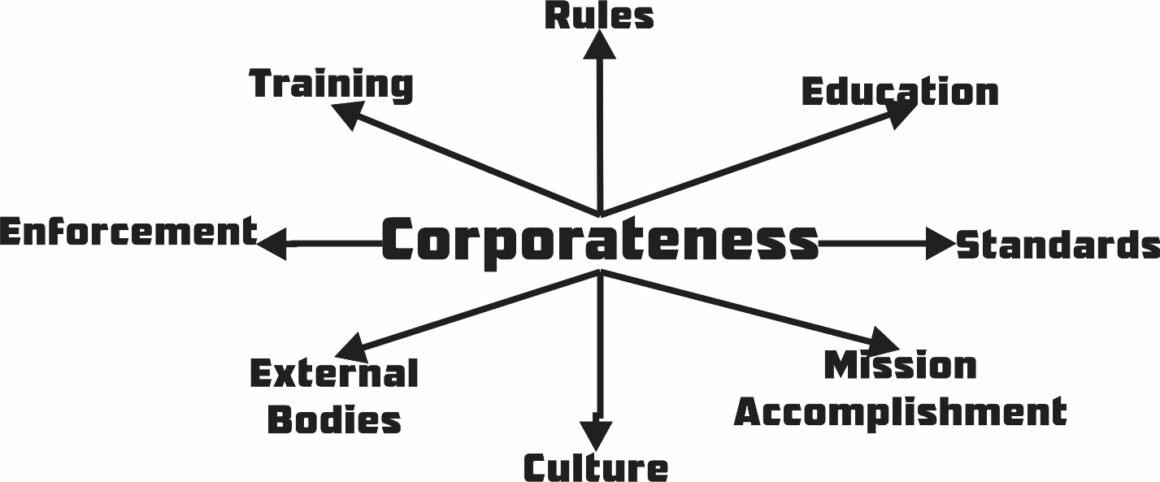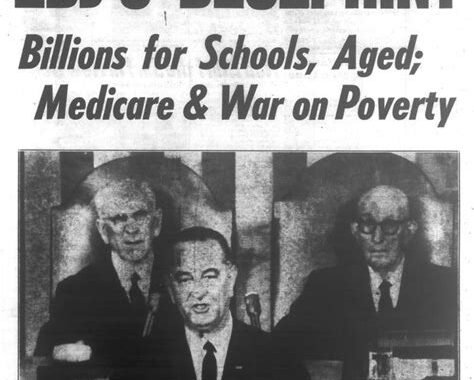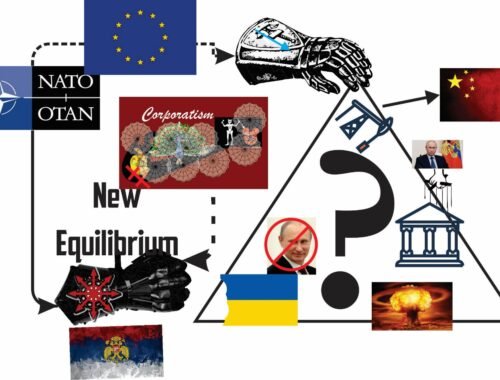
The Bureaucratization of the Military, Part 3: Corporateness and Bureaucracy
Part 1 of this series introduced Samuel Huntington’s The Soldier and the State and discussed careerism and jobs. Part 2 discussed the declining trust the public has in the military and introduced the nutcracker using Huntington’s two imperative: functional and societal. This part looked at the pressures on the military profession and how they could break it.
While this part is primarily about the military, we can readily export the concepts to most organizations.
Huntington wrote there three primary characteristics of a profession: expertise, responsibility, and corporateness. The first two terms are straightforward. The third, corporateness, however, is not a common term. Richard M. Swain and Albert C. Pierce, in Chapter 2 of The Armed Forces Officer, wrote:
A profession has a sense of what Huntington called, somewhat awkwardly, corporateness, which he defined as “a sense of organic unity and consciousness of themselves as a group apart.” There are at least two important dimensions of this corporateness: a shared identity, and the wish to exert control over membership in the profession.
In the section on corporateness, Huntington wrote:
Officership is a public bureaucratized profession. The legal right to practice the profession is limited to members of a carefully defined body. His commission is to the officer what his license is to a doctor. Organically, however, the officer corps is much more than simply a creature of the state. The functional imperative of security give rise to complex vocational institutions which mold the office corps into an autonomous social unit. (Samuel Huntington, The Soldier and the State, p 16)
I suspect corporateness functions like the figure above. The professional body sets and enforces standards and rules of conduct and provides training and education. It also maintains relations with external organizations and agencies and sets a professional culture. These are all designed to ensure mission accomplishment.
This can get incestuous when the same body sets and enforces rules and standards and that the body is autonomous or semi-autonomous. The military, with its formerly high trust and very specialized and distinct mission, is relatively autonomous and sets and enforces its own rules and standards. In theory, the Department of Defense (DoD), the President as Commander-in-Chief, and Congress provide oversight.
That is why many professional credentialing bodies are independent and separate from those they credential. Perhaps the most well-known agencies are the American Medical Association and the American Bar Association. Government at all levels is the enforcing function. For example, the Food and Drug Administration provides oversight to the pharmaceutical and food industries using laws Congress passes and their own regulations. The regulatory capture phenomenon can inhibit regulation and compliance enforcement when the regulatory and governmental agencies act in the best interests of the regulated industry.
While this oversight for certification and compliance is flawed, there is at least an external set of agencies setting the standards and reviewing compliance. The military sets its own standards and, unless there is a significant issue, the military manages its own compliance to the standards it sets. There are three types of issues that can bring increased scrutiny from DoD and Congress:
- A punctuated equilibrium that significantly changes the environment or the nature of the mission. Education Reform Part 1 and Reconstructing History Part 7 discuss punctuated equilibriums and how they shape today’s political and cultural environments.
- A mission disaster, such as the shameful way the US withdrew from Afghanistan.
- A Congressional budget fights over resources and priorities. The 31 littoral ship issue in the Navy, the A-10 and re-fueler replacement in the Air Force, and the Blackhawk replacement in the Army are examples. At times, Congress also defies military stated requirements to continue to build expensive end items to maintain jobs in a key congressional district.

Source: https://www.collinsdictionary.com/dictionary/english/troika
Military managers see these three types of issues coming together in a troika that pulls the military in multiple directions. They understand their jobs are increasing politicized in this environment and their jobs and career advancement depend more on the political issues than the mission issues. Just look at the shameful route from Afghanistan. Not a single military manager or DoD manager lost their job.
So what we see is a continual erosion of standards to meet political demands. Three examples show this trend:
- The required SAT score to get into the military academies continues to drop to help the military meet the political diversity, inclusion, and equity (DIE) objectives.
- When I was at the Brigadier General Transition Course (aka Charm School), the problem Army managers gave us to work was how to get more minority general officers. One “solution” was to restrict company grade evaluation ratings for minority company grade officers to give them time to learn and develop. The problem is that company grade officers are directly responsible for unit performance in combat and our soldiers’ lives depend on their decisions.
- The Army’s new physical fitness test was designed to reflect required combat tasks and be one-size fits all. There would be no separate standards for men and women or for age. When Army managers and congressional reps discovered few women could perform well on the test, the standards changed.
As I have noted elsewhere, standards should exist for a reason. The Army Combat Fitness Test (ACFT) was designed with that in mind. But when reality met political requirements, reality lost.
The military bureaucracy is more about jobs and careerism than professional mission accomplishment. If the trend toward bureaucracy and careerism continues, we will see more mission disasters. As we saw in Part 2 of this series, Huntington’s 2 factors are now a nutcracker with societal imperatives outweighing functional imperatives and threatening to break the military nut.





